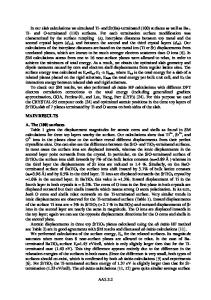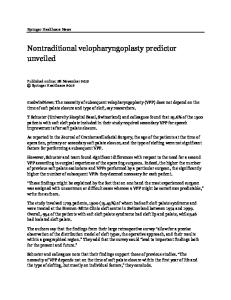Mechanism of methanol decomposition on the Pd/WC(0001) surface unveiled by first-principles calculations
- PDF / 1,928,285 Bytes
- 13 Pages / 595.276 x 785.197 pts Page_size
- 13 Downloads / 439 Views
RESEARCH ARTICLE
Mechanism of methanol decomposition on the Pd/WC(0001) surface unveiled by first-principles calculations Jinhua Zhang1,2, Yuanbin She (✉)1 1 College of Chemical Engineering, Zhejiang University of Technology, Hangzhou 310014, China 2 School of Materials and Environmental Engineering, Chizhou University, Chizhou 247000, China
© Higher Education Press and Springer-Verlag GmbH Germany, part of Springer Nature 2020
Abstract In this study, the decomposition of methanol into the CO and H species on the Pd/tungsten carbide (WC)(0001) surface is systematically investigated using periodic density functional theory (DFT) calculations. The possible reaction pathways and intermediates are determined. The results reveal that saturated molecules, i.e., methanol and formaldehyde, adsorb weakly on the Pd/ WC(0001) surface. Both CO and H prefer three-fold sites, with adsorption energies of – 1.51 and – 2.67 eV, respectively. On the other hand, CH3O stably binds at three-fold and bridge sites, with an adsorption energy of – 2.58 eV. However, most of the other intermediates tend to adsorb to the surface with the carbon and oxygen atoms in their sp3 and hydroxyl-like configurations, respectively. Hence, the C atom of CH2OH preferentially attaches to the top sites, CHOH and CH2O adsorb at the bridge sites, while COH and CHO occupy the three-fold sites. The DFT calculations indicate that the rupture of the initial C–H bond promotes the decomposition of CH3OH and CH2OH, whereas in the case of CHOH, O–H bond scission is favored over the C–H bond rupture. Thus, the most probable methanol decomposition pathway on the Pd/WC (0001) surface is CH3OH ! CH2OH ! trans-CHOH ! CHO ! CO. The present study demonstrates that the synergistic effect of WC (as carrier) and Pd (as catalyst) alters the CH3OH decomposition pathway and reduces the noble metal utilization. Keywords density functional theory, methanol, direct methanol fuel cells, WC(0001)-supported Pd monolayer, decomposition mechanism
Received July 24, 2019; accepted October 27, 2019 E-mail: [email protected]
1
Introduction
The synthesis and decomposition of methanol have attracted widespread research attention, due to their promising application in direct methanol fuel cells (DMFCs) and petroleum industry [1]. With the development of the fuel cell technology, steam reforming of decomposed methanol has emerged as an efficient strategy to produce hydrogen [2]. In addition, methanol is one of the most important synthetic chemicals. Therefore, to elucidate the catalytic mechanism of CH3OH decomposition, several groups have investigated the reaction of methanol with different metals, alloys and metal-supported surfaces, such as Au, Cu, Ru, Pt, Pd [3 – 8], PtPd3(111), PdCu3(111) [9], Pt3Ni(111) [10], Rh-doped Cu(111) [11], Ru/Pt(111) [12], Pd – Cu [13], PdIn(110) [14], Pt/W(110) [15] and boron-doped/graphene-loaded Ru – Pt [16]. These studies demonstrate that the low-temperature surface chemistry of methanol depends on the metal substrate and the adsorption temperature. At pre
Data Loading...










